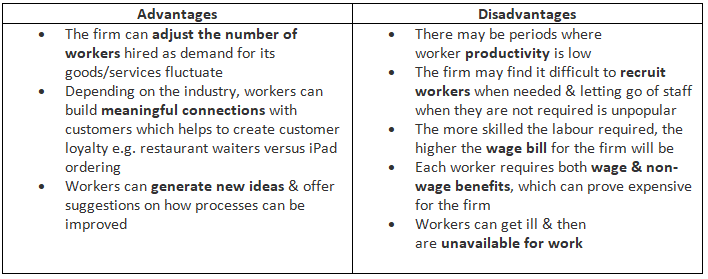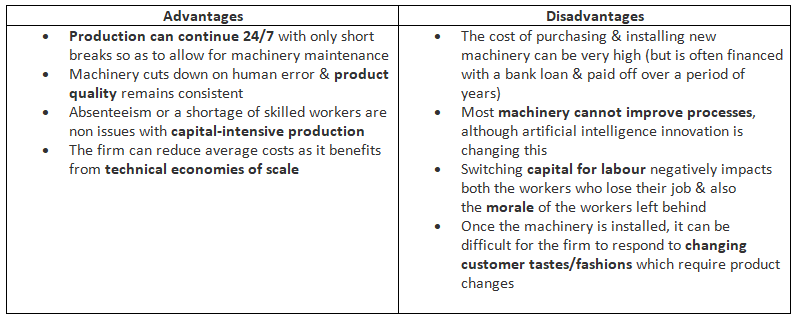Year 11 Exam > Year 11 Notes > Economics for GCSE/IGCSE > Labour & Capital-intensive Production
Labour & Capital-intensive Production | Economics for GCSE/IGCSE - Year 11 PDF Download
The Distinction Between Capital- & Labour-intensive Production
- A firm's production can be categorized as either labor-intensive or capital-intensive.
- Labor-intensive production implies that labor costs represent a higher proportion than other factors of production, including machinery.
- Capital-intensive production, on the other hand, indicates that the proportion of machinery costs outweighs those of other factors of production, including labor.
Choosing Between Capital- & Labour-intensive
- When firms decide how to produce goods/services efficiently, they weigh the advantages and disadvantages of capital and labor-intensive production based on the nature of their product or service.
- Some industries opt for labor-intensive production, employing a large workforce, especially when tasks require technical skills that are hard or costly to automate. For instance, this is evident in professions like teaching or garment manufacturing.
The Advantages & Disadvantages Of Labour-Intensive Production

- In certain industries, there's a trend towards being more capital-intensive, gradually substituting labor with capital when it becomes economically viable to do so. As wages increase in a country, there's a tendency for more labor to be supplanted by machinery.
- Ongoing advancements in technology and process innovation prompt firms to continuously assess the feasibility of transitioning from labor-intensive to capital-intensive production.
The Advantages & Disadvantages Of Capital-Intensive Production

Question for Labour & Capital-intensive ProductionTry yourself: What is the distinction between labor-intensive and capital-intensive production?View Solution
The document Labour & Capital-intensive Production | Economics for GCSE/IGCSE - Year 11 is a part of the Year 11 Course Economics for GCSE/IGCSE.
All you need of Year 11 at this link: Year 11
|
71 videos|82 docs|39 tests
|
FAQs on Labour & Capital-intensive Production - Economics for GCSE/IGCSE - Year 11
| 1. What is the difference between capital-intensive and labour-intensive production? |  |
Ans. Capital-intensive production refers to a production process that relies heavily on machinery, technology, and equipment, while labour-intensive production relies on a larger workforce to carry out tasks manually.
| 2. How do companies choose between capital-intensive and labour-intensive production methods? |  |
Ans. Companies choose between capital-intensive and labour-intensive production methods based on factors such as cost, efficiency, technology availability, and the nature of the product being produced.
| 3. What are the advantages of capital-intensive production? |  |
Ans. The advantages of capital-intensive production include increased productivity, lower labour costs in the long run, higher quality products, and reduced reliance on human labour.
| 4. What are the disadvantages of capital-intensive production? |  |
Ans. The disadvantages of capital-intensive production include high initial investment costs, potential job losses, inflexibility in adapting to changing market demands, and the risk of technological obsolescence.
| 5. How does a company transition to capital-intensive production from labour-intensive production? |  |
Ans. A company can transition to capital-intensive production by investing in new technology and machinery, retraining employees to work with new equipment, and gradually phasing out labour-intensive methods.

|
Explore Courses for Year 11 exam
|

|
Signup for Free!
Signup to see your scores go up within 7 days! Learn & Practice with 1000+ FREE Notes, Videos & Tests.
Related Searches
















